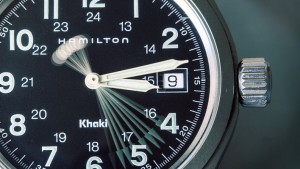When a non-hobbyist visitor is observing one of my marine aquariums for the first time, among the questions he or she almost invariably asks—along with inquiring about the expense and the level of difficulty relative to a freshwater tank—is something along the lines of, “How much time does it take to maintain that?”
My usual answer to that question is, “Not as much as you might think.” For some reason, there’s a pervasive misconception out there that in order to maintain a marine aquarium successfully, the hobbyist must spend every waking moment feeding, cleaning, adjusting, testing, tweaking, jiggering, and kneeling before a statue of Neptune.
All hobbies are time-consuming
Don’t get me wrong; a successful marine aquarium does demand a certain time commitment—but then so does any other hobby or avocation worth pursuing. Whether you’re into golf, bowling, scuba diving, model ship building, or stamp collecting, you’re going to spend just as much time, if not more, developing and honing the necessary skills or simply participating.
Modest daily time commitment
So what sort of time commitment are we talking here? An hour a day? Two hours? Once a marine aquarium is established, the actual day-to-day commitment can be fairly modest. Between my 125-gallon FOWLR tank and 75-gallon reef tank, I probably spend no more than 20 minutes to a half hour on most days attending to care and maintenance chores (feeding livestock, scraping algae, topping off for evaporation, emptying protein skimmer collection cups, checking temperatures, etc.)
What’s more, certain aquarium chores, such as freshwater top-offs, calcium/alkalinity supplementation, and pH monitoring, can be automated easily enough if you’re somewhat technologically savvy (I’m not, so I don’t), freeing up even more time for simply enjoying the salty fruits of your labor.
Different livestock, different time demands
Of course, if you have multiple tanks or a large, technologically complex system, your daily time commitment is likely to be greater. Also, the particular livestock you keep plays a part. For instance, reef tanks generally (though not always) demand more daily upkeep than fish-only systems. Plus, if you have a reef tank featuring calcium-hungry stony corals and tridacnid clams, you can expect to invest more time on the chore of supplementing calcium and alkalinity. If your livestock includes fish or coral species that require target feeding, mealtimes might be more time-consuming, as well.
The new tank time sink
I mentioned above that the day-to-day time commitment can be fairly modest once a marine aquarium is established. This point bears repeating because you can expect to invest a lot more time in your marine aquarium during the initial setup and stocking phase—potentially upwards of an hour or two on some days. Here are just some of the reasons:
- You’re just getting the hang of the equipment and still “dialing things in.”
- You are (or should be) operating a separate quarantine system, which demands its own maintenance and very frequent
- You’ll need to acclimate all specimens to your quarantine tank and again to your display tank after quarantine.
- Specimens in quarantine may require extra coaxing to encourage feeding or some form of treatment if they exhibit signs of disease.
- More-frequent-than-usual testing of water parameters is necessary while cycling and stocking the system.
No question, water changes take time!
I would be remiss if I were to downplay the time involved in performing routine partial water changes—especially in larger systems. In fact, just this past weekend, I managed to burn well over two hours doing a 20% water change in my 125-gallon.
But this critical chore doesn’t always have to be such a major time waster. The key is to spread many of the little jobs we tend to save for water-change day—such as mixing clean salt water (which really should be done at least a day ahead of time anyway), scraping algae, rinsing prefilters, and cleaning your protein skimmer—over several preceding days. That way, your time expenditure may be a bit greater on the days leading up to your water change, but then the water change itself isn’t such an onerous project.
What’s your time-saving secret?
So, fellow salties, how much time would you estimate that you spend on your aquarium each day and what are your time-saving secrets? Let us know in the comment section below!



